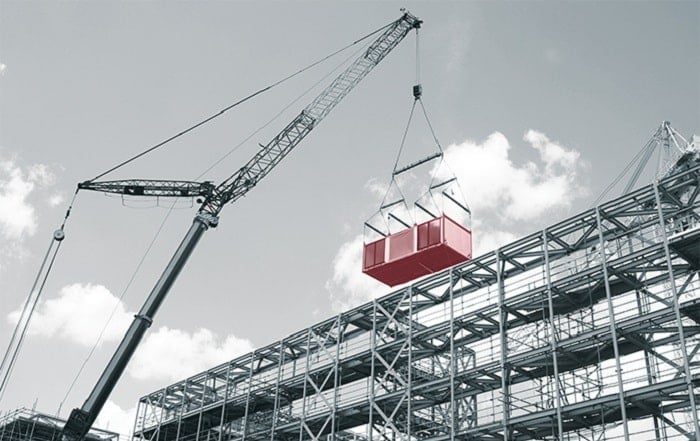Post-COVID property markets…sustainable growth beats short-term blips every time
Most of the economic consequences of COVID were entirely predictable: as progressive lockdown restrictions tightened their grip on domestic and international travel, air carriers suffered a catastrophic slump in revenues; GDP in virtually every economy sank or slowed as workers were forced to stay at home, and interest rates fell close to zero to sustain growth (below zero in Japan’s case). So far, so bad, you might think, but the post-COVID period has already seen a dramatic reversal in those trends: 34.4 million passengers took to the skies last year, with industry experts confidently predicting a return to pre-COVID levels over the year ahead, and in the UK, itself mirroring a global fiscal trend, interest rates soared from 0.25% to 5.25% over 2023. Leaving aside obvious concerns about inflation, it’s never good to have base rates bumping along at close to 0%... there’s no inflation in a junkyard.
But looking back from our post-COVID perspective, one of those pandemic trends was certainly unexpected.
Property markets…pre and post-pandemic
Take the UK (again), where residential property prices grew by an average of 20.4% between January 2020 and December 2022 (www.lloydsbankinggroup.com), which meant, in turn, that the average UK homeowner pocketed £24,000 during lockdown (close to the (then) average annual income for a UK worker…simply for sitting at home). That’s in stark contrast with the three pre-pandemic years, where equivalent price rises were a relatively desultory 7.8%. Those figures seem to defy basic economic orthodoxy: when UK lockdowns were first imposed, demand for residential properties slumped overnight, so why should a collapse in sectoral demand then result in an increase in prices? Airline operators would have given their eye teeth for such an unlikely, counterintuitive bounce…
Well, most of the reasons were entirely local and highly personal: principally a surge in socially isolated homeowners suddenly searching for more space in bigger, more rural homes (average prices for detached properties rose 25.9% during the pandemic, compared to 8.8% in the pre-pandemic years). Premium pricing at that level was fuelled too by the government’s introduction of a series of favourable Stamp Duty breaks (an initiative that finally crashed into insignificance over the fifty short days of Liz Truss’s administration).
In contrast, and for broadly the same reasons, prices of flats and smaller properties in urban areas (London in particular) grew by just 3.8% during the pandemic, but that still wasn’t enough to flatten out a more generalised sectoral trend (see above).
And the post-pandemic period has been even more peculiar for UK property: while we were all learning to fly again (enabling EasyJet to rake in record profits of £455 Million in 2023 (compared with a loss of £178 Million the year before (www.euronews.com)), and with everyone, everywhere, more or less back at work, and real wages rising, average house prices in the UK stubbornly decreased 1.2% year on year. Of course, the catastrophic Truss administration had more than a little to do with that, and spiralling inflation caused by global supply shortages also played its part by pushing up interest rates (see above again), but with other areas of the economy bouncing along reasonably well, it’s certainly odd to find little or any post-pandemic optimism feeding through to residential property sales.
Just like the COVID bounce, the UK’s post-pandemic property slump seems bewilderingly counterintuitive.
But don’t be too quick to jump to conclusions…after all, we’ve been focusing on the UK, and there’s a wide world beyond the English Channel: international property markets have not, it seems, been experiencing the same looking-glass economics that Rishi Sunak is currently struggling to address.
Global Markets…and India in particular
Half a world away, in Pune, residential property sales increased by 9.6% in the year to December 2023, despite the fact that (outstripping the UK) Indian interest rates rose to 6.5% last June. That has a lot to do with the striking asymmetries between GDP growth on the subcontinent and the former mother country: final figures are still coming in, but the UK economy is projected to post growth of 0.5% for 2023 (www.oecd.org), compared with 7.6% for India, and that, in turn, reflects the underlying buoyancy of the subcontinent’s economy: fuelled by the demands of the largest population on the planet, increasingly urbanised, increasingly middle class, and ever more hungry to demonstrate their new-found affluence.
And what better way to do that than to buy a bigger and better home?
So it is no surprise to learn that over in Pune, the upscale end of its property market is currently growing even faster than the 9% average: 12% to be precise, and the market share for apartments with a floorplate over 1000 sq ft has increased 14% year on year.
Shishir Baijal, Chairman and Managing Director of Knight Frank India (www.knightfrank.co.in) did not doubt the underlying reasons: “The growing preference for larger properties highlights the dynamism of Pune’s realty market. With ongoing enhancements in infrastructure and a rise in economic activity, the residential market in Pune is solidifying its sturdy base, paving the way for a flourishing real estate sector.”
Quite so…sustainable growth beats counterintuitive blips every time.
Modulex (www.modulex.in)
Modulex is a ConstrucTech Company working at the vanguard of emerging global construction: making use of 3D volumetric steel modular techniques: harnessing the power of emerging technologies, including AI, Blockchain and IoT, to meet burgeoning housing and infrastructure needs in developing and emerging markets. Delivering at pace and with optimal cost efficiencies.
Executive Overview
It might seem difficult to explain the current disparities between UK and Indian real estate markets…but the reason lies close to the surface and has everything to do with India’s growing status as an economic powerhouse.

%20(1).jpg)


%20(1).jpg?width=150&height=150&name=turbine-green-energy-electricity-technology-concept%20(1)%20(1).jpg)
.png?width=150&height=150&name=Untitled%20design%20(11).png)



Leave a Reply